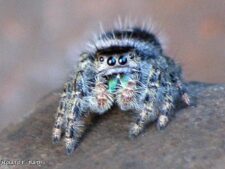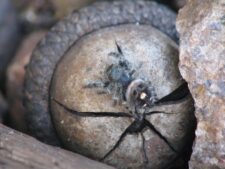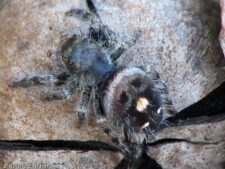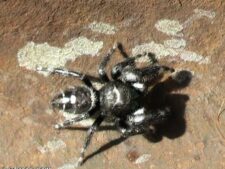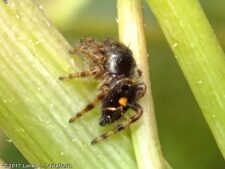
Both the male and female of this species are about a half inch long (12 mm) as adults. The immature male shown in Photos A-D was about 1/4 inch long, as can be seen in relation to the Red Oak acorn in image (C,D). The striking metallic coloration of is fangs (chelicerae) and the three white marks on its abdomen identify this species (A,B,C,D). A young specimen shown with a fly was photographed, and identified with the help of BugGuide, in late September 2014 (F). These spiders jump their prey, as their name suggests, but they also can spin silk and will use a drag line when jumping. The two largest eyes give them excellent binocular vision, according to some experts the best vision of all spiders.
This jumping spider is common throughout North America and in this area. It can be found almost anywhere.
This jumping spider is common throughout North America and in this area. It can be found almost anywhere.
Disclaimer: The content of NatureSearch is provided by dedicated volunteer Naturalists of Fontenelle Forest who strive to provide the most accurate information available. Contributors of the images retain their copyrights. The point of contact for this page is: Loren Padelford.

